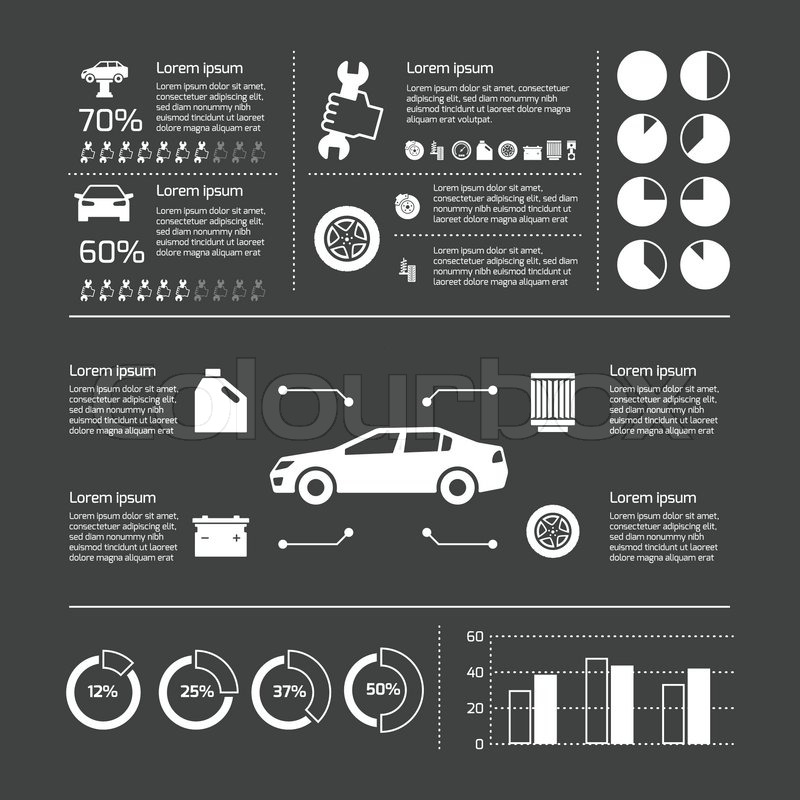Recognizing Your Car'S Warning Lights: What Do They Actually Mean?
Recognizing Your Car'S Warning Lights: What Do They Actually Mean?
Blog Article
Authored By-Higgins Torres
When you're behind the wheel, those radiant caution lights on your dashboard can be a bit complicated. Do https://brakeplacesnearme95162.ttblogs.com/10795187/the-impact-of-auto-outlining-on-resale-worth-insights-from-study understand what they're trying to tell you about your vehicle's health and wellness? Recognizing the significance of these lights is crucial for your safety and the long life of your lorry. So, the following time one of those lights appears, wouldn't you intend to decode its message properly and take the necessary actions to resolve it?
Common Warning Lighting and Interpretations
Recognize typical warning lights in your car and recognize their definitions to guarantee risk-free driving.
The most normal caution lights include the check engine light, which indicates concerns with the engine or exhausts system. If this light comes on, it's crucial to have your automobile inspected without delay.
The oil pressure alerting light shows reduced oil pressure, needing instant attention to prevent engine damage.
A blinking battery light might suggest a faulty charging system, potentially leaving you stranded otherwise resolved.
The tire pressure tracking system (TPMS) light signals you to reduced tire stress, influencing lorry security and gas efficiency. Overlooking this could result in dangerous driving conditions.
car washes near me shows a trouble with the anti-lock stopping system, endangering your capability to stop swiftly in emergency situations.
Lastly, the coolant temperature level warning light warns of engine getting too hot, which can lead to extreme damages if not resolved quickly.
Comprehending these common caution lights will aid you deal with concerns immediately and preserve safe driving problems.
Importance of Prompt Interest
Understanding the common caution lights in your vehicle is just the very first step; the relevance of without delay attending to these warnings can't be highlighted sufficient to ensure your safety and security on the road.
When a caution light illuminates on your dashboard, it's your vehicle's method of connecting a prospective concern that requires focus. Disregarding these cautions can bring about more extreme problems in the future, compromising your safety and security and potentially costing you more in repairs.
Motivate interest to advising lights can protect against failures and accidents. For example, a blinking check engine light can suggest a misfire that, if left unattended, could cause damages to the catalytic converter. Resolving this promptly can save you from an expensive repair service.
In a similar way, a brake system cautioning light may signify low brake liquid or worn brake pads, crucial components for your safety when driving.
Do It Yourself Troubleshooting Tips
If you discover a warning light on your control panel, there are a few do it yourself fixing pointers you can attempt prior to looking for professional aid.
The initial step is to consult your automobile's handbook to recognize what the specific warning light indicates. Occasionally the issue can be as basic as a loosened gas cap causing the check engine light. Tightening the gas cap may resolve the issue.
An additional common problem is a reduced battery, which can cause numerous warning lights. Examining Click On this website for rust and ensuring they're safe could repair the trouble.
If a warning light lingers, you can try resetting it by separating the vehicle's battery for a couple of minutes and after that reconnecting it. Furthermore, checking https://www.motorbiscuit.com/cost-replacing-brake-pads-rotors/ , such as oil, coolant, and brake liquid, can assist fix alerting lights related to these systems.
Conclusion
To conclude, understanding your car's caution lights is crucial for maintaining your automobile running smoothly and securely. By promptly dealing with these signals and recognizing what they imply, you can prevent expensive repair work and possible failures.
Keep in mind to consult your cars and truck's manual for specific details on each advising light and take action appropriately to ensure a hassle-free driving experience.
Remain informed, stay safe on the road!
